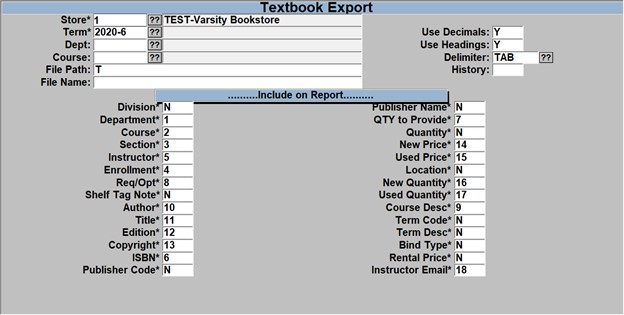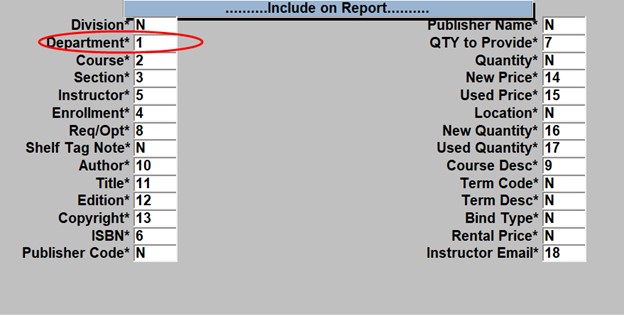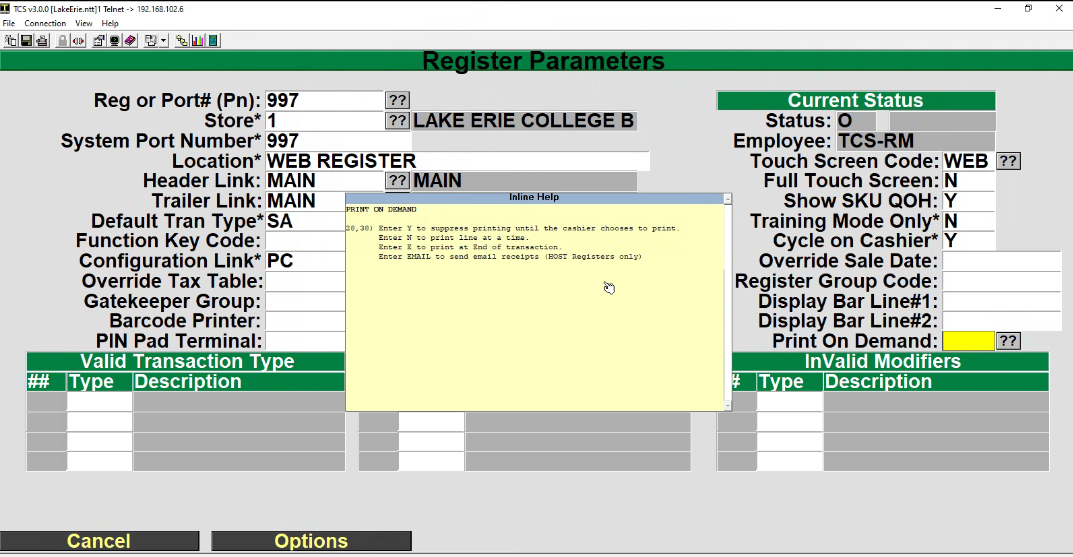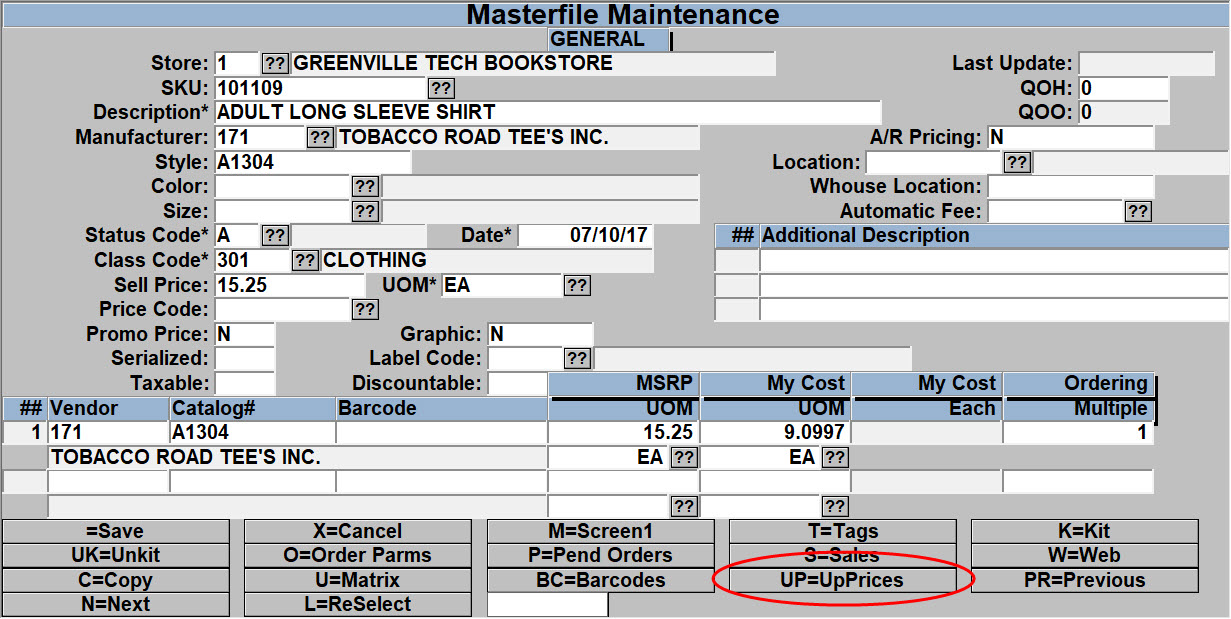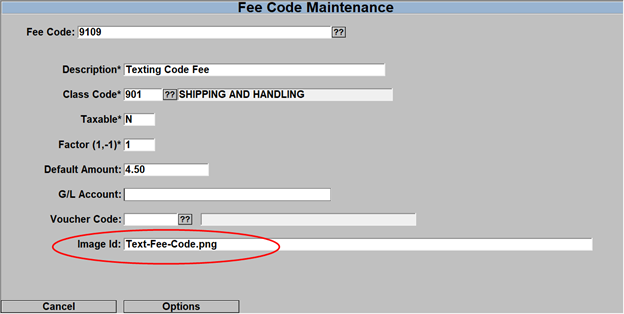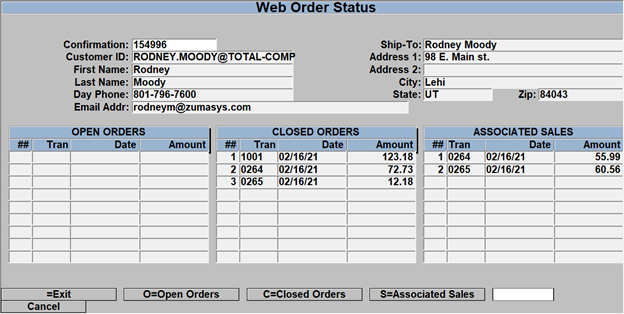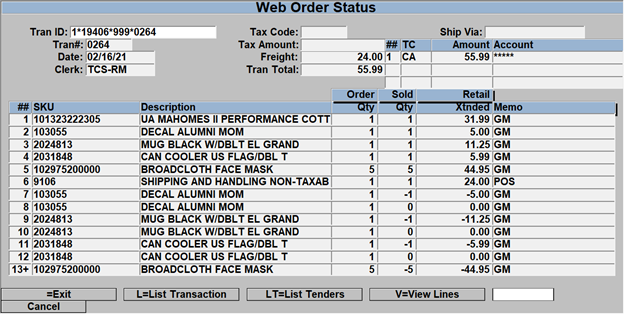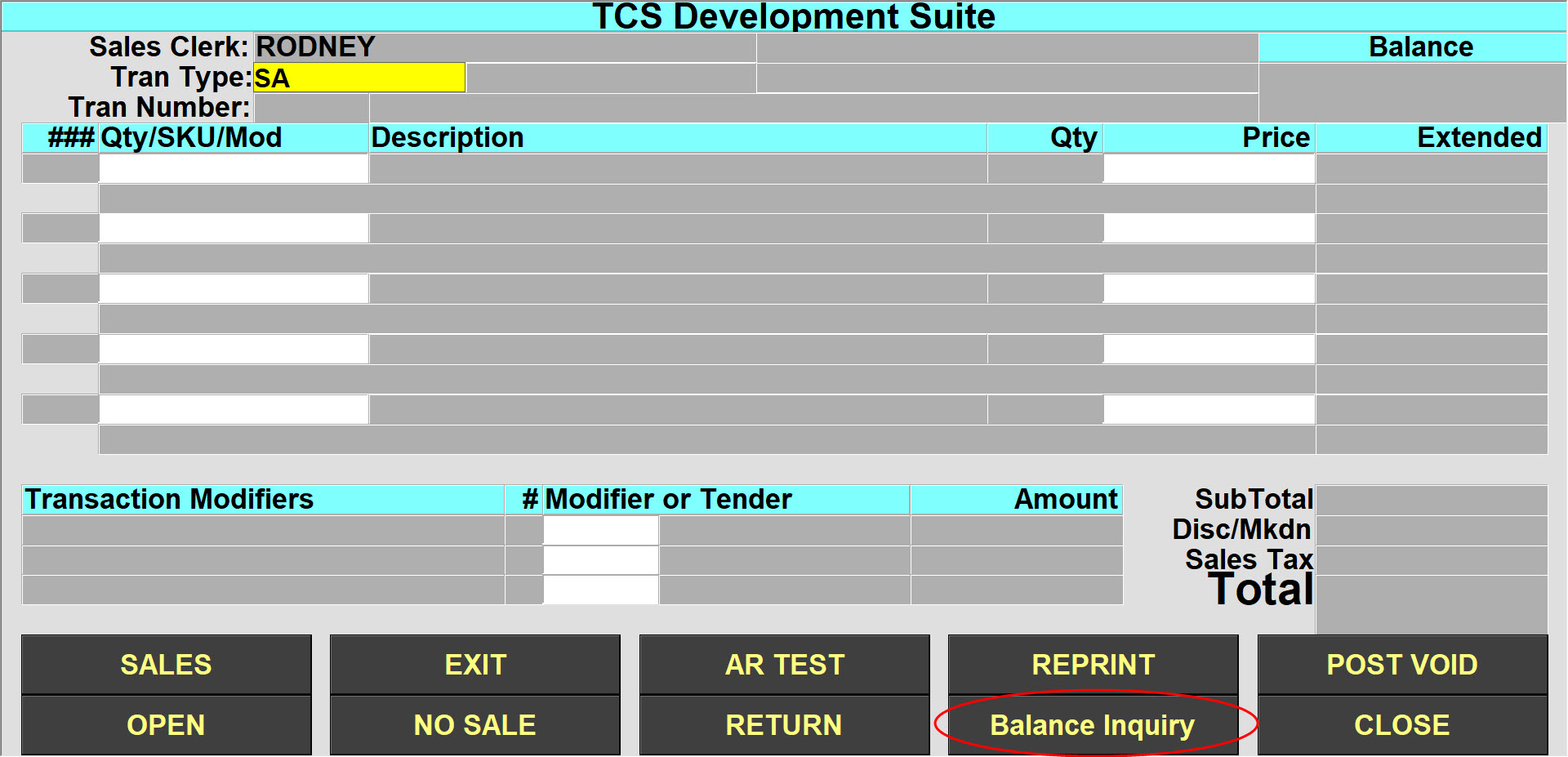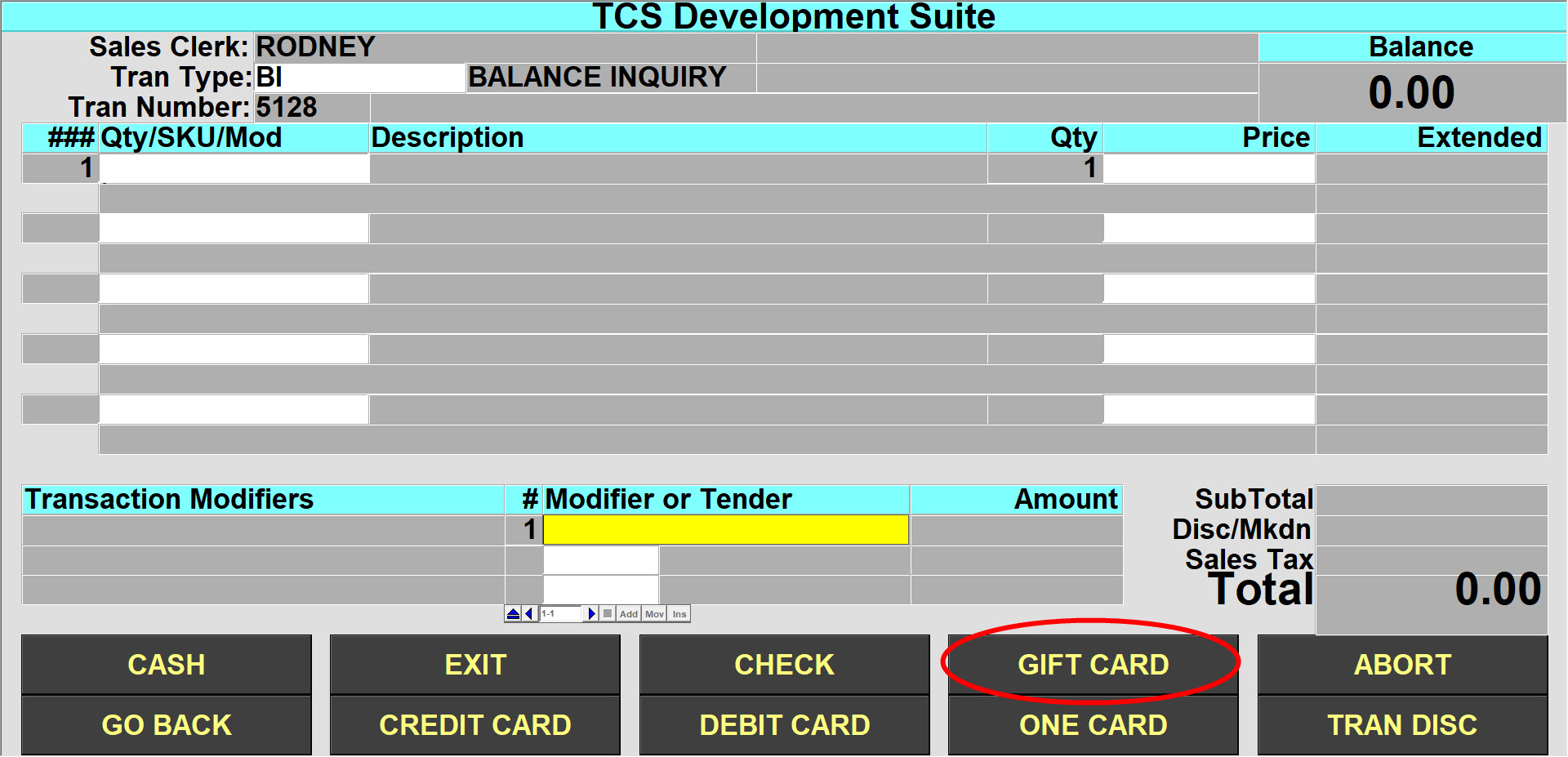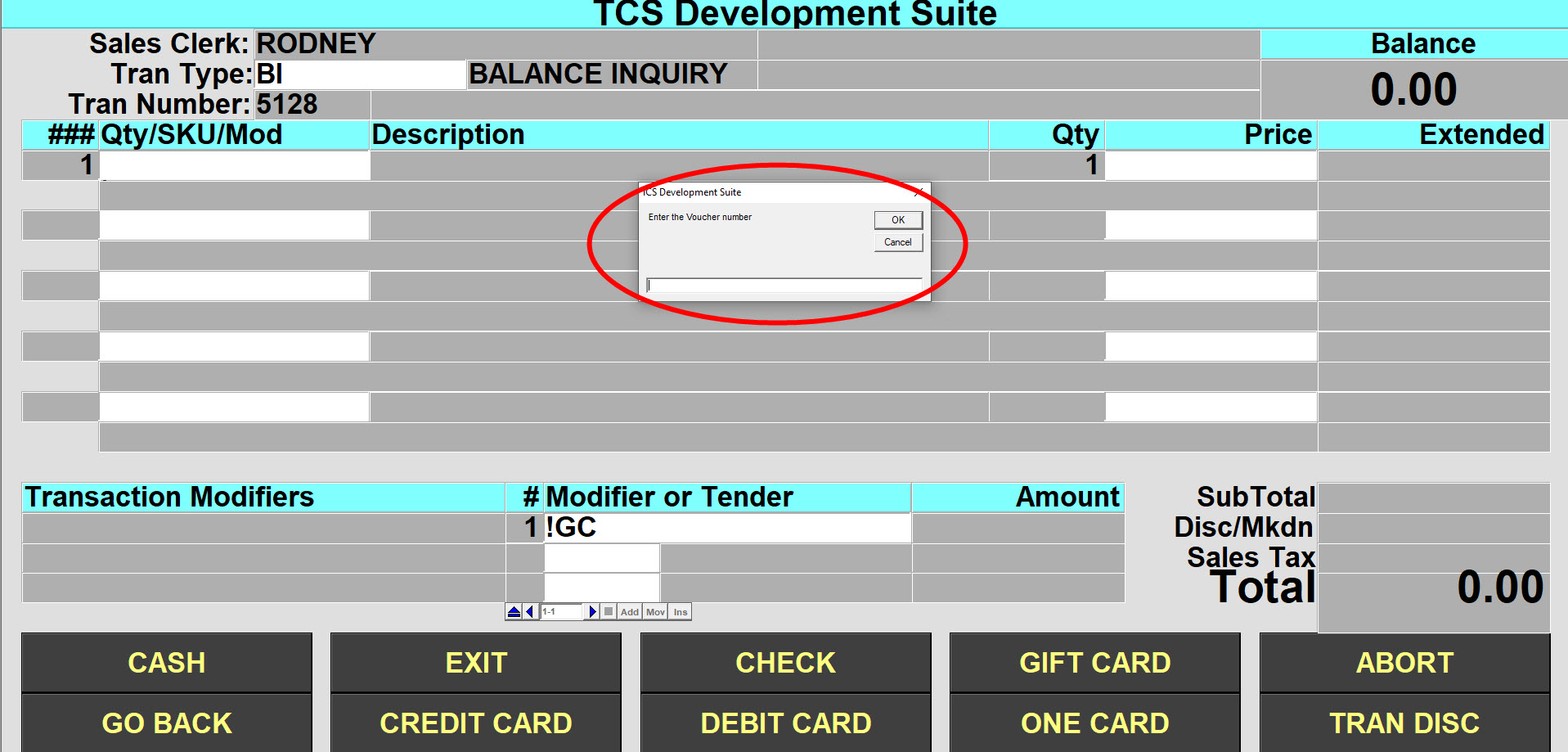EDIT SUBJECT LINE ON WEBSTORE EMAILS
EDIT SUBJECT LINE ON WEBSTORE EMAILS
When a web order is received, if you have enabled the parameter to send out notifications when received, then an email will be sent to the customer to let them know that you have received their order. For that email the subject line is hard coded to be ‘Order Received’ and you could not change that.
Likewise, when you process an order, an email is sent to the customer with the details of the order. The subject could be modified for this email, but it was limited to just static information enter in the “Subject” line in POS.26.5
You now can modify the subject line for both emails and include the customer’s confirmation # in the email.
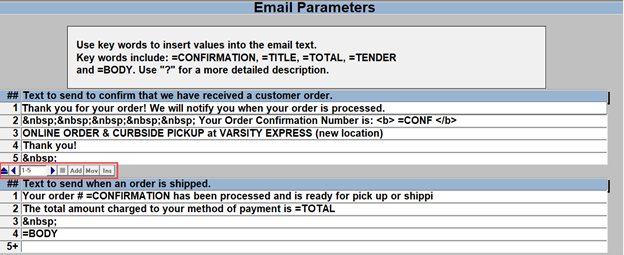
- Log to POS.26.5 “Email Parameters”
- Select T=Mail Text from the bottom prompt.
- In each of the sections, select the right arrow to highlight the lines and then select ‘Ins’ and enter 1 to create a new line at line 1.

- On the new line enter ‘SUBJECT: ‘ this must be the word “SUBJECT” followed by a ‘:’ and a space then you can type what you would like the subject to be. You can also include the keyword =CONFIRMATION to include the confirmation #
- SUBJECT: This is the new subject line for order submitted confirmation =CONF
Once that is done for the section to send the order received confirmation then hit enter until you get to the next section for ‘Order is shipped’ and repeat the steps above and modify the subject matter to be similar to the example below.
SUBJECT: Order =CONF has been processed
